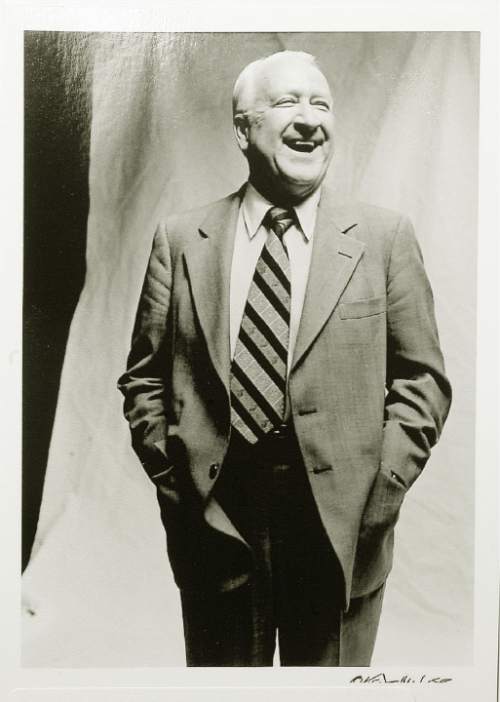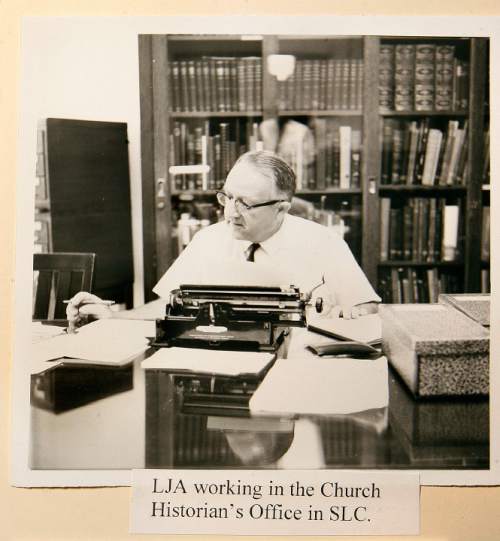This is an archived article that was published on sltrib.com in 2016, and information in the article may be outdated. It is provided only for personal research purposes and may not be reprinted.
The late Mormon historian Leonard Arrington not only documented the faith's past, he also yearned to shape its future.
Gregory A. Prince's new biography, "Leonard Arrington and the Writing of Mormon History," reveals a 1990s diary entry in which the noted scholar rattled off practices he would like to see the institutional Church of Jesus Christ of Latter-day Saints cease.
Among them:
• "Appointing the highest tithe payers to positions of leadership rather than the most capable or worthy. ...
• "Maintenance of a disloyalty file on liberals ... The supposition is that liberals are out to destroy or embarrass the church, a supposition entirely false. ...
• "Insistence on unanimity among the Twelve [apostles], which means that the most obstinate member, the one holding out against the rest, wins. ...
• "Insistence on choosing a new president from the senior member of the Twelve. This means [the LDS Church] will always have a president far beyond his energetic, creative period of life."
In addition, the reform-minded Arrington argued women should be "associates to the Twelve and sit in on their meetings," that the female Relief Society president "should sit in on bishopric meetings" and that "mothers should be allowed to stand in the circle to bless babies [and] confirm newly baptized persons."
Leader worship can be "unhealthy," the Mormon scholar reiterated, and can "keep us from realizing that we must search for the Spirit and the Light."
In a blog post, Benjamin Park, an assistant history professor at Sam Houston State University in Texas, tallied a baker's dozen of "surprising facts" he gleaned from Prince's book, including:
• The healing blessings Arrington received from Mormon women soon after his birth and before undergoing bypass surgery decades later. The first came from his mother, Edna, and the latter from his second wife, Harriet, along with co-worker and friend Maureen Beecher, as well as Michael and Jan Quinn. "These experiences might have made him especially open to scholarship on the ritual practices of Mormon women," Park writes.
• Arrington's chance encounter with Pope Pius XII in Rome while serving as a soldier in World War II.
• The two or more students tasked by Mormon leaders to "observe" and report back on Arrington's teachings during a course he led on Mormon history at LDS Church-owned Brigham Young University.
Prince's book is not a traditional biography. Rather, it is organized by theme — from Arrington's Idaho boyhood to his military service, his economic studies to his first marriage to his beloved Grace. It also covers his move from the walls of ivy on college campuses to the concrete columns of the LDS Church Office Building.
In addition, the 500-plus-page volume tackles tough topics — from the historian's battles with Mormon authorities to the faith's historic end of its priesthood ban on black males, from the 1993 purge of LDS intellectuals to the saga of the murderous Mormon forger Mark Hofmann.
Peggy Fletcher Stack







